Opensky
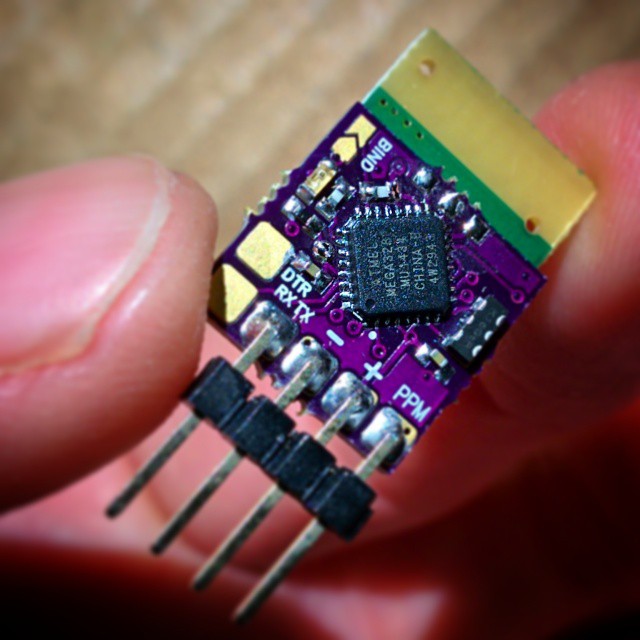
I’ve been doing a lot hardware stuff recently. I didn’t know much about hardware when I started and I like learning, so this is a lot of fun for me. Let me introduce you to a project I’ve been doing some work on lately called Opensky.
Opensky is an open source hardware and software RC receiver that speaks the Frsky D8 protocol, so it interoperates with Frsky Taranis. To the right is an Opensky receiver I built and use on one of my smaller flying things.
My contributions to Opensky so far have been small. I documented the hardware requirements (BOM) in case someone else wanted to build one and added a few firmware features. I made it easier to bind to a transmitter after flashing the firmware and added RSSI PPM injection since I like the way that works in OpenLRSng.
Failsafe is critical for a remote control system, and Opensky’s failsafe works reasonably well, but can be a bit tricky to set up correctly. The existing failsafe detects a loss of radio link and sets all channels to 1000μS and continues these pulses. The problem is that I’m getting about 995μS pulses at minimum, so the failsafe value is actually higher than my lowest transmitted value. The flight controller can’t know that the connection is down without some odd tweaking, so the failsafe ends up not being very safe in this case.
Last week’s project was writing a couple Saleae Logic analyzer plugins for helping me analyze this sort of thing. I didn’t actually have an application at the time, but I figured it’d be fun. As it turns out, my CPPM analyzer was helpful in figuring out how to make a better failsafe last night.
First, I took at look at what the d4r-ii “no pulses” failsafe looked like on the wire. It’s not exactly what I expected, but shortly after turning off my transmitter, the signal line went high and stayed there:

Getting the Opensky to do that was a small bit of code, but I’d kind of screwed myself over on the programming aspect.
The Opensky RX is based on Arduino in the sense that it uses at atmega328p microcontroller and uses the arduino toolkit for building the firmware images. The receiver itself has a UART exposed and can be programmed directly from the Arduino software if you include the boot loader.
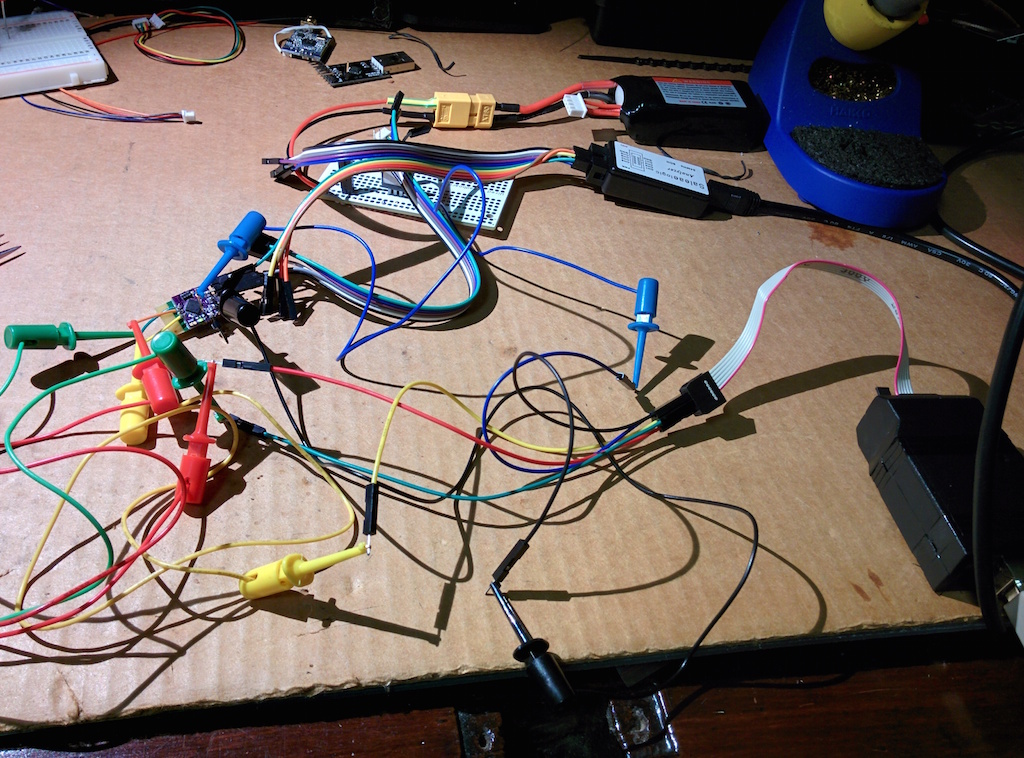
But of course, I didn’t do that when I made mine. So I had to rig up an ICSP setup with the soldering of a bunch of tiny bits of wire and metal, some chip clips, and a bunch of other crap that ended up looking like the thing to the left.
You can’t really see all the detail in the mess, but the one wire mast that has to be dropped approximately into the center of the board is non-trivial. But it worked. As a favor to my future self, I went ahead and added the arduino bootloader.
Adding the arduino bootloader provides a couple major advantages. First, I can program the thing without all that wiring difficulty. But also, I can actually interact with the thing’s serial port for debugging and stuff. I figured I’d give this a go.
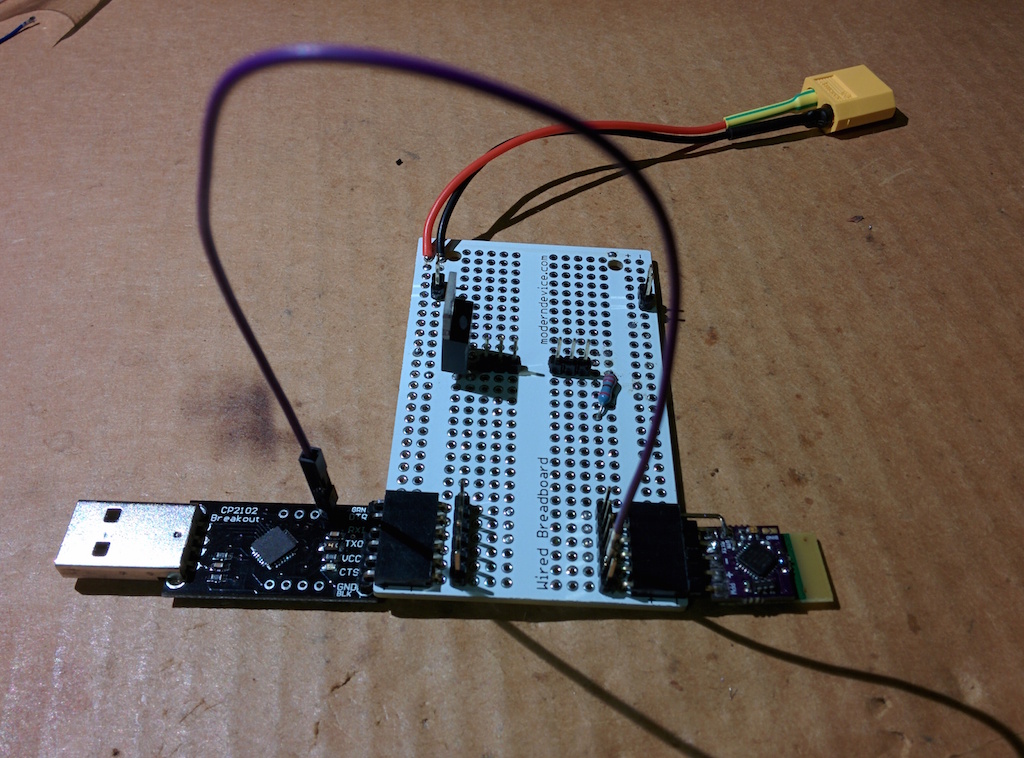
To the right, you can see the current version of my opensky dev kit. I installed a single right angle pin to get to DTR off the Opensky RX itself, and then just used a six pin female connector to plug it in. I added male connectors to access all the individual pins, but ran a common ground across the board.
The board also has a 3v3 regulator to run the RX off a battery as well as another six pin female connector (and breakout male pins) that allow me to plug a CP2102 (USB/UART adaptor) breakout board in. Of course, the serial port and DTR are already wired up. You just need one jumper wire to specify the desired power source (battery or the CP2102’s 3v3 output).
Hopefully this allows me to do some more dev on this thing since there are more things I’d like to do.
In the meantime, here are a couple of pictures of how I’m using one of these in real life:
I attached the Opensky RX directly to an afromini. The RX itself requires 3V3 (any more and you kill the radio), so I removed the input voltage pin I had an ran a bit of 30AWG silicone wire to the output of the LDO that provides power to the main processor on the flight controller. This worked out pretty well:
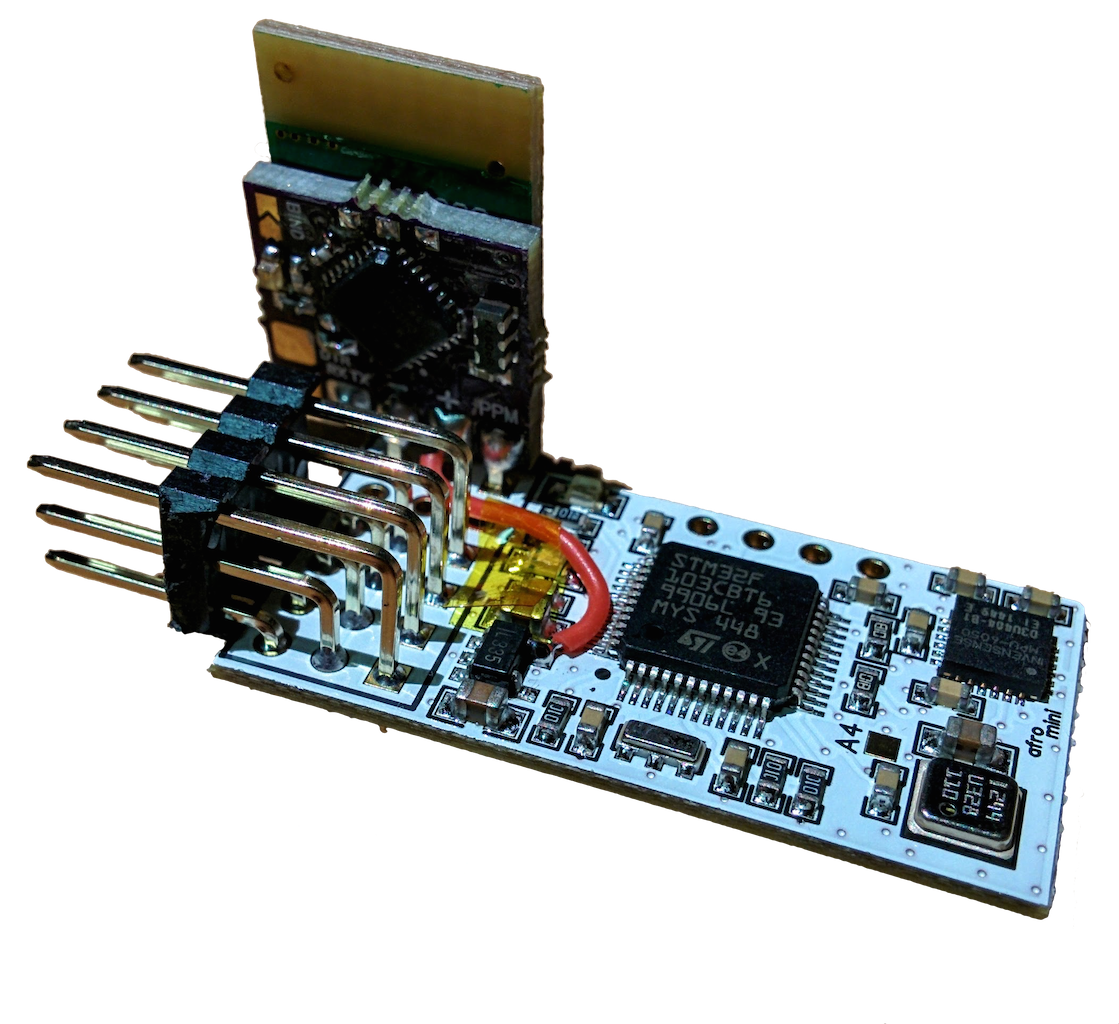
The above is the control system for my 190mm quad which has been quite fun to fly. The RSSI over PPM lets me verify I’m not getting a weakened control signal (on OSD) as I fly around.
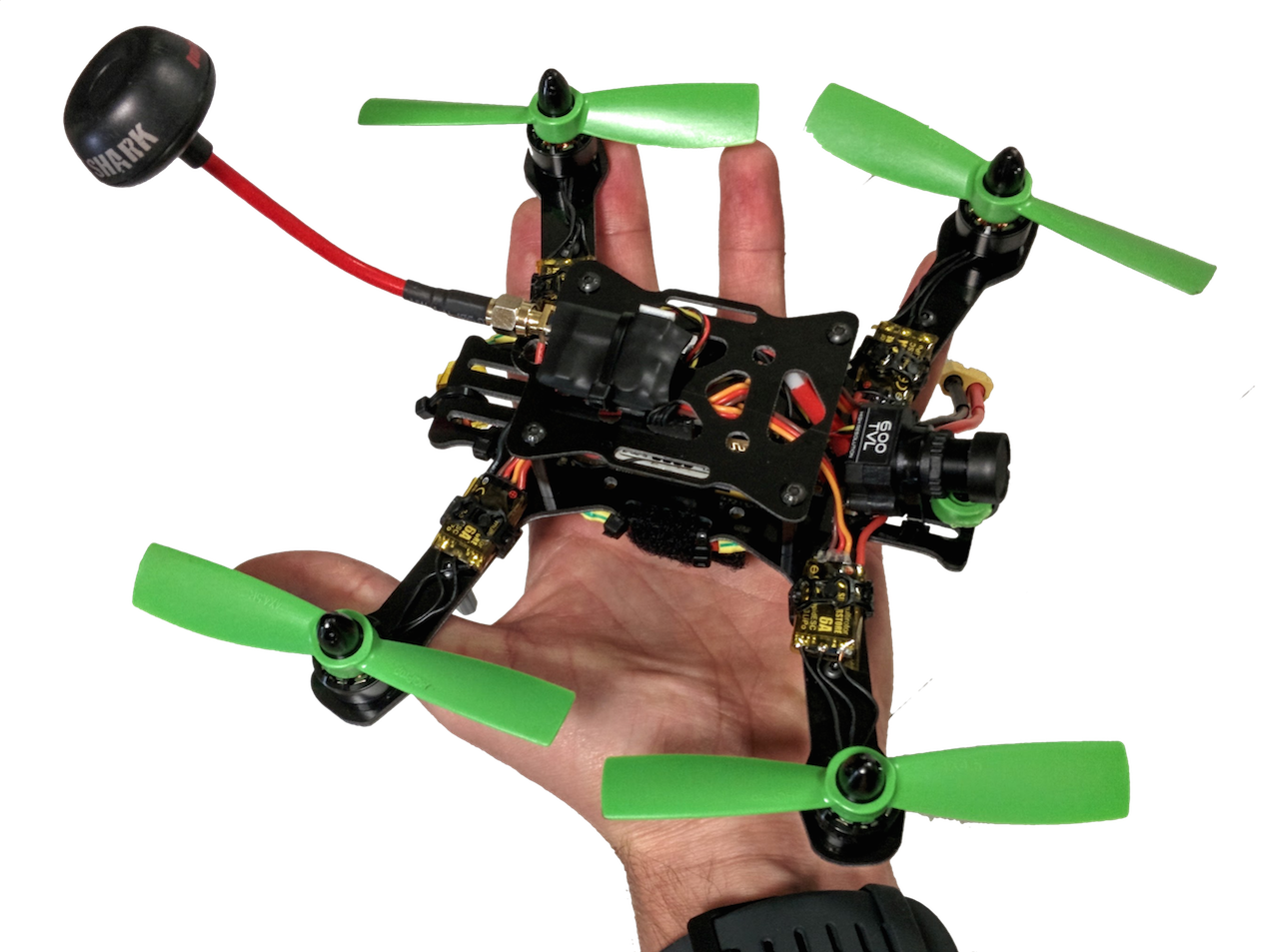
If you want to make an Opensky RX yourself, check out the [hardware][openskyrx] page for the list of parts to get started along with a couple boards from oshpark. There’s more documentation to write, but I found enough to get stuff working quite well.
This stuff keeps me busy. I feel like have no idea what I’m doing, but in the end, the things I make fly (and help others make things fly). That’s very rewarding.
